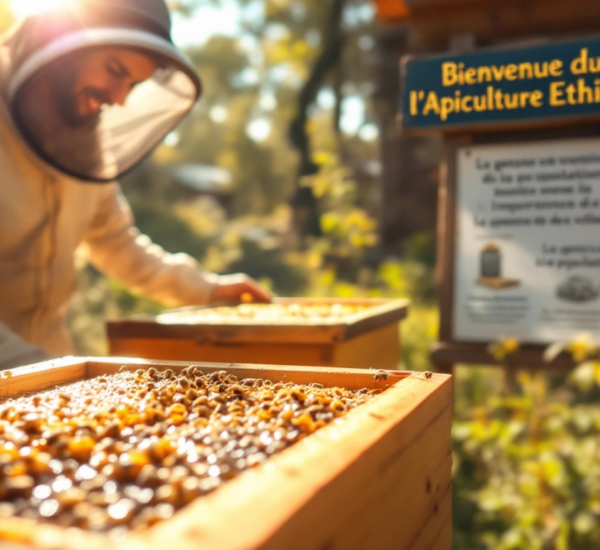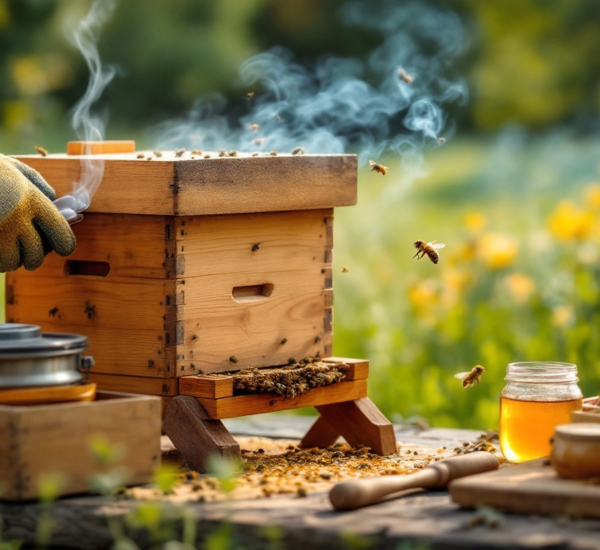Boost your garden’s pollination and biodiversity by attracting bees naturally. This guide offers practical tips for creating a bee-friendly haven.
Table of Contents
- Introduction
- The Importance of Bees
- Choosing the Right Plants
- Providing Shelter for Bees
- Creating Water Sources
- Avoid Harmful Pesticides
- Additional Tips for a Bee-Friendly Garden
- Conclusion
- FAQ
Introduction
Gardening enthusiasts often seek ways to enhance their gardens’ vibrancy and productivity. Attracting bees naturally is one sustainable approach that promises a flourish of colors and a bountiful yield. In this guide, we’ll explore actionable ways to make your garden a welcoming haven for these crucial pollinators. Learn more about backyard biodiversity here.
The Importance of Bees
Bees play a pivotal role in the ecosystem, notably in pollinating flowering plants, which is essential for the reproduction of most crops and wild plants. By fostering a bee-friendly environment, you not only enhance the beauty and bounty of your garden but also contribute to broader ecological stability. Numerous studies, such as those from the U.S. Forest Service, highlight the necessity of bees for maintaining biodiversity.
Choosing the Right Plants
Diverse Plant Species
Bees are attracted to diversity in plant species. Incorporate a variety of flowering plants that bloom at different times of the year to provide a continuous nectar and pollen source. Lavender, sunflowers, and wildflowers are excellent choices.
Native Plants
Include native plants in your garden. They are adapted to your local environment and are familiar to local bee species. Explore native plant options in our detailed guide.
Providing Shelter for Bees
Bees need places to rest and nest. You can offer suitable habitats by:
- Installing bee hotels.
- Leaving areas of bare earth for ground-nesting bees.
- Providing old wood or plant stems for bees to create nests.
Creating Water Sources
Bees require water for hydration and cooling. A shallow dish with pebbles and water or a birdbath can serve as an excellent water source. Ensure it’s shallow to prevent drowning and place it in a location with some shade to keep it cool.
Avoid Harmful Pesticides
Chemical pesticides can be detrimental to bee populations. Opt for organic or natural pest control alternatives like neem oil or introduce beneficial insects like ladybugs. For more tips on pest management, read our comprehensive guide to organic gardening.
Additional Tips for a Bee-Friendly Garden
- Maintain: Keep your garden tidy but not overly manicured. Dead wood and plant debris can be vital habitats.
- Educate: Encourage neighbors to practice bee-friendly gardening techniques.
- Participate: Engage in community projects focused on pollinator conservation.
Conclusion
Creating a bee-friendly garden is a rewarding endeavor that benefits both you and the environment. By planting diverse species, providing shelter and water, and avoiding harmful chemicals, you pave the way for a flourishing garden and healthier bee populations. Embrace these practices, and watch your garden transform into a vibrant ecosystem teeming with life.
Ready to take the next step? Explore our gardening resources to deepen your knowledge and make an even greater impact!
FAQ
- What are the best plants to attract bees?
- Plants like lavender, sunflowers, and wildflowers attract bees due to their nectar and pollen.
- How can I ensure bees find shelter in my garden?
- Install bee hotels and provide natural materials like wood and bare soil for nesting.
- Are pesticides harmful to bees?
- Yes, chemical pesticides can harm bees. Consider organic alternatives.




